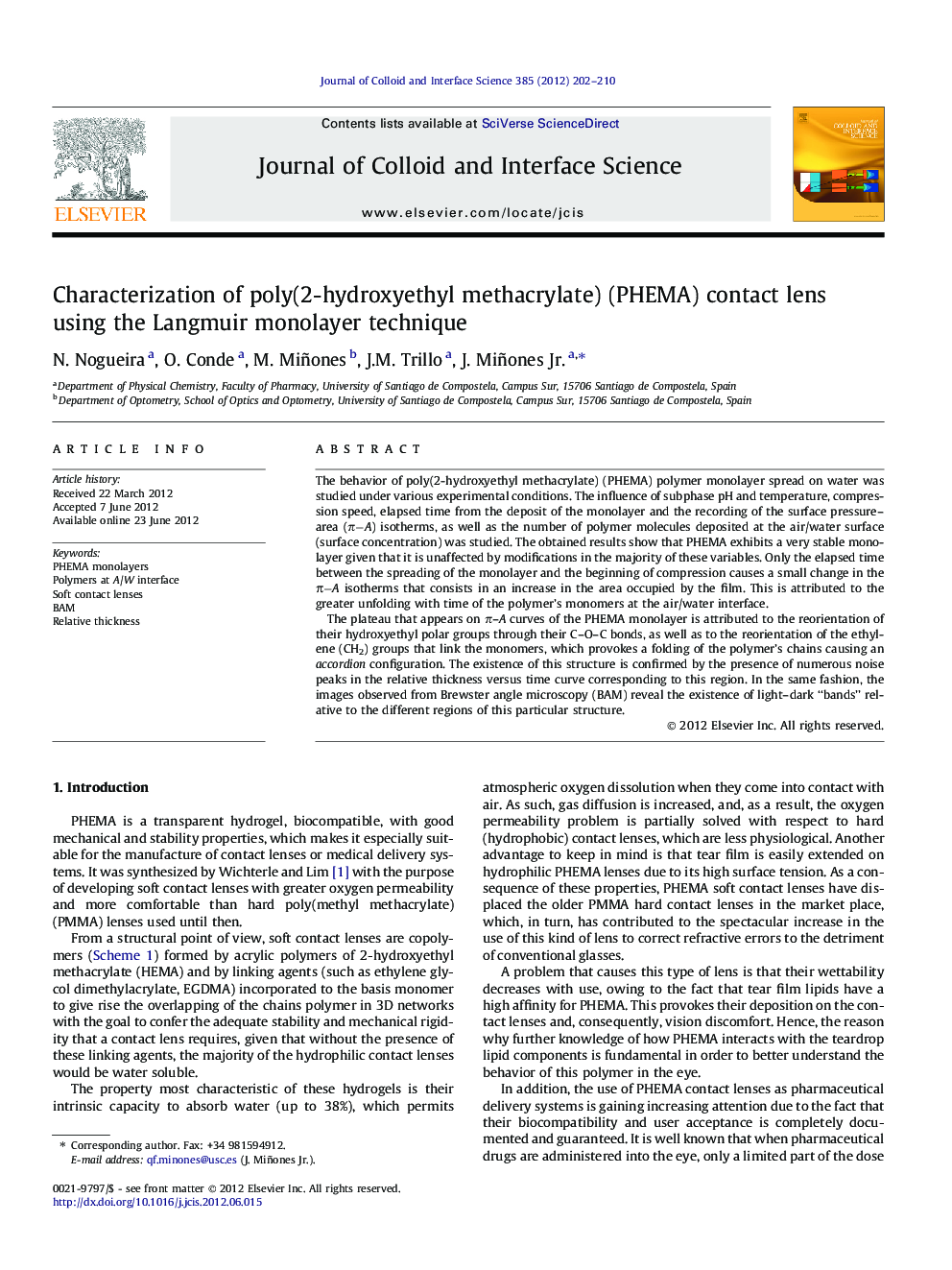| Article ID | Journal | Published Year | Pages | File Type |
|---|---|---|---|---|
| 608025 | Journal of Colloid and Interface Science | 2012 | 9 Pages |
The behavior of poly(2-hydroxyethyl methacrylate) (PHEMA) polymer monolayer spread on water was studied under various experimental conditions. The influence of subphase pH and temperature, compression speed, elapsed time from the deposit of the monolayer and the recording of the surface pressure–area (π−A) isotherms, as well as the number of polymer molecules deposited at the air/water surface (surface concentration) was studied. The obtained results show that PHEMA exhibits a very stable monolayer given that it is unaffected by modifications in the majority of these variables. Only the elapsed time between the spreading of the monolayer and the beginning of compression causes a small change in the π−A isotherms that consists in an increase in the area occupied by the film. This is attributed to the greater unfolding with time of the polymer’s monomers at the air/water interface.The plateau that appears on π–A curves of the PHEMA monolayer is attributed to the reorientation of their hydroxyethyl polar groups through their C–O–C bonds, as well as to the reorientation of the ethylene (CH2) groups that link the monomers, which provokes a folding of the polymer’s chains causing an accordion configuration. The existence of this structure is confirmed by the presence of numerous noise peaks in the relative thickness versus time curve corresponding to this region. In the same fashion, the images observed from Brewster angle microscopy (BAM) reveal the existence of light–dark “bands” relative to the different regions of this particular structure.
Graphical abstractFigure optionsDownload full-size imageDownload high-quality image (77 K)Download as PowerPoint slideHighlights► PHEMA monolayer exhibits a gas–liquid expanded transition. ► The BAM images in the plateau region confirm the expanded state. ► In the LE state matches the value obtained for PMMA in trans configuration. ► Light–dark “bands” in BAM images correspond to the particular accordion structure. ► Different conditions was studied and the PHEMA monolayer were very stable.
